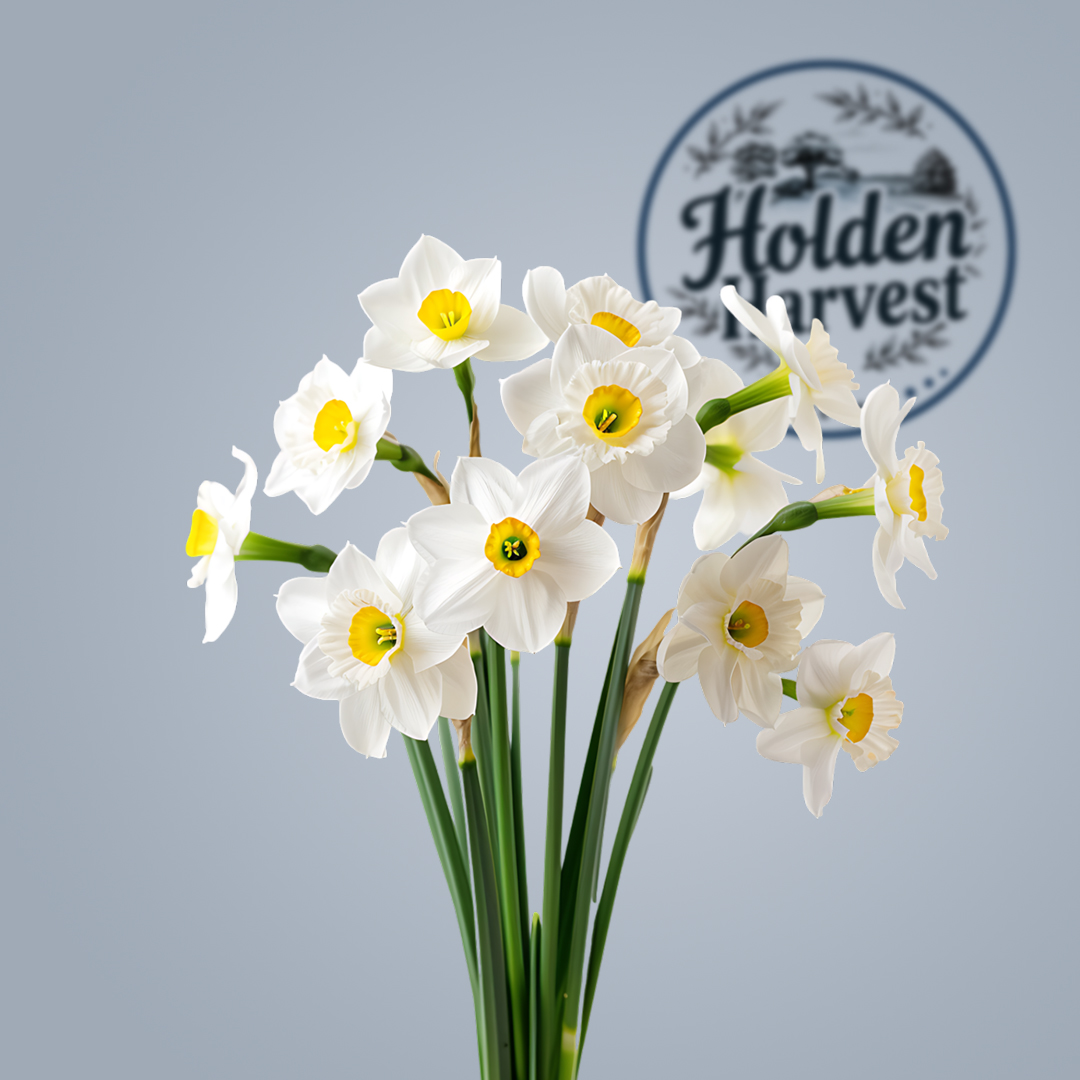The daffodil, a bright symbol of renewal and hope, blooms in vibrant yellow and white. Known for heralding spring, it represents new beginnings and joy, making it a favorite in gardens and floral arrangements.
type of Daffodils:
Daffodils are unique because of their distinct trumpet-like shape, surrounded by petal-like tepals. Their bright yellow color makes them stand out, and they often bloom in early spring, providing a burst of color after the cold winter months. These flowers symbolize joy, vitality, and optimism.
In many cultures, daffodils symbolize new beginnings and hope. In Western cultures, they are often associated with the start of the new year and the arrival of spring. In China, daffodils are believed to bring good fortune, and their yellow color is a symbol of happiness. Daffodils are seen as symbols of vitality and positivity across the world.

There are many varieties of daffodils, each with unique characteristics:
Daffodils are easy to grow and care for:
Daffodils are generally resistant to pests, but they can sometimes face issues like aphids or fungal diseases. Regularly check your plants and ensure proper drainage to avoid such problems.
Daffodils are widely appreciated not only for their beauty but also for their cultural significance. They symbolize positivity and hope, making them a favorite in springtime celebrations like Easter and Chinese New Year. In the UK, daffodils are also used to raise awareness for cancer research through the Marie Curie Daffodil Appeal.

Conclusion
Daffodils are more than just beautiful flowers; they are a symbol of new beginnings and joy. Whether planted in gardens or gifted as bouquets, daffodils brighten any space, spreading positivity and energy.
1. When is the best time to plant daffodils?
Daffodils should be planted in the fall, before the first frost.
2. Do daffodils require a lot of sunlight?
Yes, daffodils thrive in sunny spots with at least six hours of sunlight daily.
3. How can I protect my daffodils from pests?
Regularly inspect your daffodils and ensure proper drainage to avoid pest issues.